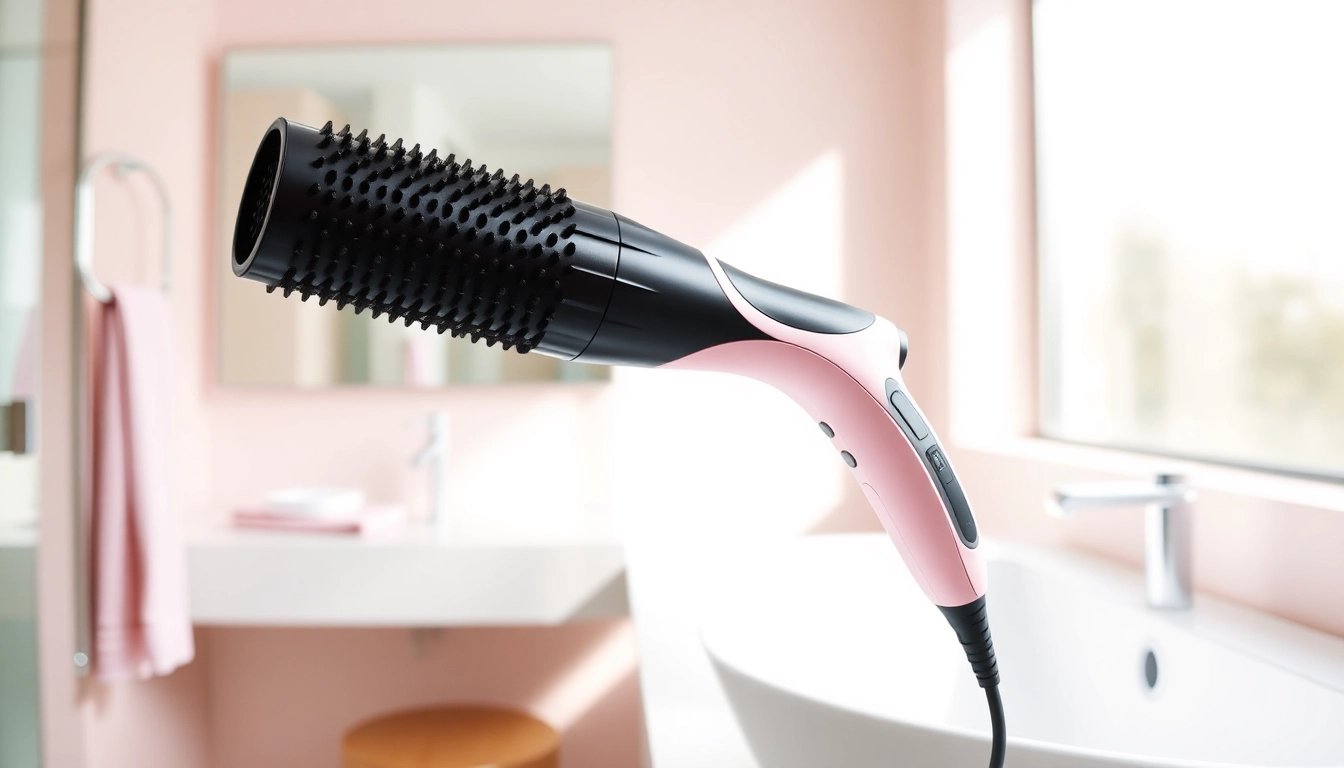Introduction to Robot Vacuum and Mop Technology
In recent years, the home cleaning landscape has transformed dramatically, thanks to advancements in technology. One of the most significant innovations in this realm is the advent of the robot vacuum and mop. These smart devices are engineered to automate the tedious tasks of vacuuming and mopping, providing homeowners with more leisure time and less manual labor.
Understanding the Basics of Robot Vacuums
Robot vacuums, often referred to as robovacs, are autonomous cleaning devices designed to navigate through homes, sucking up dirt, debris, and pet hair. They operate using a mix of sensors, brushes, and suction mechanisms, allowing them to efficiently cover large surface areas. Most models feature programmable cleaning schedules, enabling users to set specific times for the device to operate. With various models available, each offers unique functionalities—from basic floor cleaning to complex navigation systems that enable them to avoid obstacles.
The Dual Functionality of Mopping
Incorporating mopping capabilities into robotic vacuums has enhanced their versatility. These advanced devices can not only vacuum but also damp mop hard surface floors, such as tile or hardwood. They typically utilize a water tank and a mop pad, which helps to lift stubborn stains while providing the cleaning power of both vacuuming and mopping in a single run. Some models can even adjust cleaning patterns based on the type of surface they encounter—detecting when they are on carpet versus hardwood and applying appropriate cleaning modes.
Benefits of Using a Robot Vacuum and Mop
Using a robot vacuum and mop offers numerous advantages, including:
- Time Efficiency: Automated cleaning allows users to spend less time on routine cleaning tasks, enabling them to focus on other priorities.
- Consistent Cleaning: Robot vacuums can be programmed to clean regularly, ensuring that home surfaces remain tidy without manual effort.
- Diverse Cleaning Modes: Many models cater to various cleaning needs, accommodating everything from gentle dusting to intensive dirt removal.
- Accessibility: For those with limited mobility or busy schedules, robot vacuums offer a practical solution to regular home maintenance.
Top Features to Look for in a Robot Vacuum and Mop
When searching for the ideal robot vacuum and mop, there are several features that can significantly enhance the user experience:
Suction Power and Cleaning Performance
A critical aspect of any vacuum is its suction power. Devices equipped with higher suction capabilities can efficiently pick up larger particles and unwanted debris, ensuring a deeper clean. Look for models that offer adjustable suction settings, especially if you have sensitive flooring or varying surface types in your home. Additionally, boasting features such as HEPA filters can help in trapping allergens and dust, making the air in your home cleaner.
Battery Life and Charging Efficiency
Battery longevity is paramount for robot vacuums, as it determines how long the device can operate before it needs recharging. High-quality models typically offer longer battery life that allows for more extensive cleaning sessions. Some devices also feature automatic charging capabilities, enabling them to return to their docking stations when battery levels are low. This not only ensures uninterrupted cleaning sessions but also enhances overall efficiency.
Advanced Navigation and Smart Technology
Modern robot vacuums are equipped with sophisticated navigation systems that utilize sensors and cameras to map their environment. These systems help the vacuum navigate around obstacles, avoid falling off stairs, and efficiently cover all areas within a room. Furthermore, some models work with smart home systems, allowing users to control and schedule cleanings via mobile apps or voice commands. This level of integration elevates the convenience of using a robot vacuum and mop.
Comparing Popular Robot Vacuum and Mop Models
With numerous options available on the market, it’s important to compare various models to find the best fit for your cleaning needs. Here, we delve into a few categories that can aid in your decision-making process:
Rodents vs. Competitors: A Market Overview
When comparing brands, it’s vital to understand what each manufacturer’s flagship products offer. Recognized names such as iRobot, Roborock, and ECOVACS have dominated the marketplace with robust offerings. For instance, iRobot’s Roomba combines handling both vacuuming and mopping in an intuitive design that learners appreciate. In contrast, Roborock stood out by providing models with exceptional mapping features and suction power. Making an informed choice may hinge on your specific cleaning requirements and budget.
Price Range and Budget Considerations
Robot vacuums and mops fall within a wide price range, generally from $200 to over $1,500. Budget-conscious shoppers might find suitable models with basic functionalities, while those prioritizing technology and features may need to invest more. It is essential to assess each model against its offered functionalities rather than price alone, ensuring that you receive a device that fits your cleaning preferences.
User Reviews and Expert Comparisons
User reviews can be a critical resource in determining the performance and reliability of a robot vacuum and mop. Platforms like Reddit and consumer review sites provide insights into real-world usage experiences. Videos comparing models—such as suction tests, mopping effectiveness, and navigating complex spaces—also enhance your knowledge. Expert recommendations can identify a product’s strengths and weaknesses, guiding you towards the right investment for your home.
Best Practices for Maintaining Your Robot Vacuum and Mop
To maximize the longevity and performance of your robot vacuum and mop, consider adopting the following maintenance practices:
Regular Maintenance Tips
Routine maintenance extends the life and efficiency of your robot vacuum. Ensure that you regularly empty the dustbin after every cleaning session, clean filters, and wash mop pads if applicable. It’s advisable also to inspect brushes and wheels for hair tangles or debris that might impair performance. Following the manufacturer’s cleaning and maintenance guidelines will keep your appliance functioning optimally.
How to Optimize Cleaning Routes
Many modern robot vacuums feature customizable cleaning maps that allow users to select specific areas for cleaning, schedule cleanings in particular rooms, and manage cleaning routes. By using these features, you can ensure that the vacuum operates effectively in areas most prone to dirt or high traffic. Experimenting with route settings can lead to improved cleaning outcomes and increase the efficiency of the device.
Common Troubleshooting Steps
Even the best robot vacuums may run into occasional issues. Be prepared to troubleshoot common problems such as connectivity errors, navigation issues, or malfunctioning brushes. A helpful step is resetting the device according to the user manual or updating its software to benefit from the latest performance improvements. Additionally, ensure that sensor and camera lenses are clean for optimal performance.
Future Trends in Robot Vacuum and Mop Innovations
The field of robotics, especially regarding vacuum cleaners, is rapidly evolving. Consider some upcoming trends that could further revolutionize robot vacuums and mops:
Integration with Smart Home Systems
The integration of robot vacuums with smart home systems, such as Google Home or Amazon Alexa, allows users to control devices seamlessly through voice commands or mobile apps. As more homes embrace smart technology, consumers will expect their vacuum and mop units to communicate with other devices, sharing data and autonomously optimizing cleaning schedules.
Emerging Technologies in Cleaning Automation
Innovation in robotics continues to lead to advancements in suction technology, navigation algorithms, and cleaning solutions. Future models might include features like object recognition, which allows devices to determine the difference between furniture and obstacles that need to be avoided. Moreover, autonomous decision-making algorithms could enhance cleaning efficiency while minimizing the necessity for human intervention.
Predictions for Market Growth and Consumer Adoption
The demand for robot vacuum and mop devices is projected to grow, with more households recognizing the convenience and cleaning prowess they provide. Consumers are increasingly drawn to multi-functional robots capable of adapting to different cleaning surfaces and specific dirt types. As technology advances and more price-competitive options emerge, the likelihood of wider consumer adoption increases, steering the market toward an impressive future.


